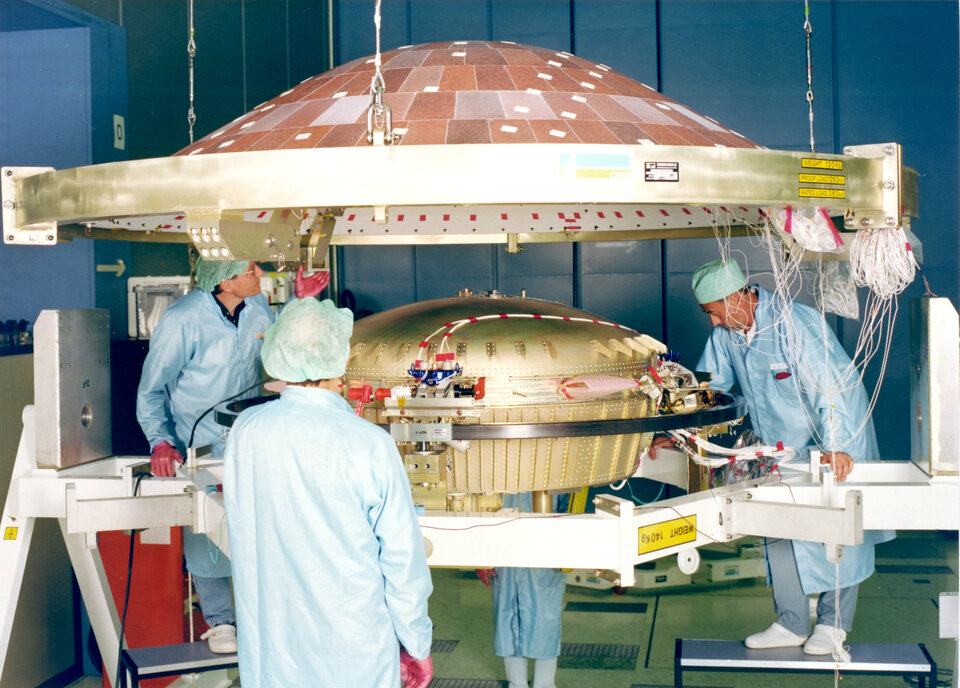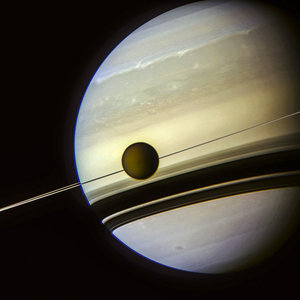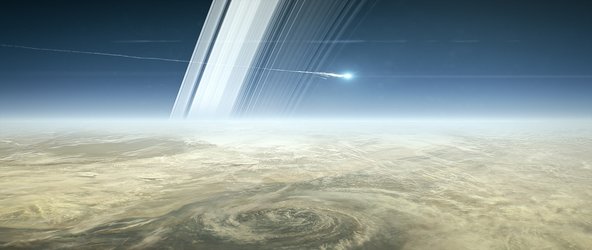Anniversary of the launch of Cassini-Huygens
On 15 October 1997, the skies over Florida were illuminated by the fiery exhaust of a Titan IV-B/Centaur rocket. This launch was the start of the most ambitious effort in planetary space exploration ever mounted: the international Cassini-Huygens mission to Saturn.
Last month, Cassini concluded its remarkable exploration of the Saturnian system in spectacular style, by plunging into the gas planet’s atmosphere. But 20 years ago this weekend, scientists from the various international partners gathered to watch the mission’s launch at events across the globe.
After an initial delay of a couple of days (because of high winds), there was great relief when the Titan/Centaur rocket lifted off in the early hours of 15 October from Launch Complex 40 at Cape Canaveral in Florida.
One of the great adventures in space exploration was under way, starting with a seven-year trek to Saturn, a journey that would see ESA’s Huygens probe landing on Titan, a tour of the ringed planet and its moons for 13 years and ending with the intentional plunge into the gas planet.
This dramatic ending ensured that Saturn’s icy moons, in particular ocean-bearing Enceladus, would not be accidentally contaminated by microbes that might have remained on board the spacecraft from Earth if a potential impact occurred.
A joint endeavour of ESA, NASA and the Italian space agency ASI, the Cassini-Huygens spacecraft was one of the largest, heaviest and most complex interplanetary spacecraft ever built. Sent to the ringed planet to study the Saturnian system initially over a four-year period, it was the fourth spacecraft to visit Saturn and the first to enter its orbit.
Cassini and Huygens can trace their histories back to early July 1982, when the ESA’s Director of Scientific Programmes issued a call for mission proposals. A total of 20 proposals were received, one of which was Cassini, under consideration for a collaborative venture with NASA and consisting of a European probe to be released into the atmosphere of Titan after being carried to Saturn by a US orbiter.
At the same time, NASA was also looking for new, more affordable missions for the 1990s and beyond. In 1983, NASA proposed two projects, the Planetary Observer programme and Mariner Mark II, with the latter to be a series of large spacecraft for the exploration of the outer Solar System, using a common design and hardware, much of it based on the Voyager and Galileo missions.

The first two Mariner Mark II projects were to be the Comet Rendezvous Asteroid Flyby (CRAF) and a mission to Saturn and its moon Titan (called the Saturn Orbiter/Titan Probe, or SOTP, later becoming Cassini). NASA and ESA performed a joint study of the potential SOTP mission from 1984 to 1985. NASA received approval for both missions in 1990.
Meanwhile, the Huygens probe had been selected by ESA’s Science Programme Committee in November 1988 as the first medium-size mission of the Horizon 2000 long-term scientific programme.As Cassini was being developed simultaneously with CRAF spacecraft, budget cuts and project rescopings forced the termination of CRAF development to save Cassini. As a result, Cassini became more specialised and the Mariner Mark II series was cancelled.

The assembly of the Cassini orbiter began in 1995 with JPL managing the project for NASA’s Science Mission Directorate. The Italian space agency (ASI) managed the design and construction of the high-gain antenna and several Cassini instruments. Equipment and instruments also came from many European countries as well as the USA.
By February 1997, Cassini had completed its environmental testing and was undergoing a final round of systems testing ready for shipping to Kennedy Space Center in Florida for preparations before the October launch date.
In Europe, development of the Huygens lander had been under way since 1989, managed by ESA with Thales Alenia Space France as prime contractor. A milestone test took place in 1995, with a Huygens mock-up dropped from a stratospheric balloon in Sweden to confirm its systems would work.
After some delays with the delivery of the flight experiments, the Huygens Flight Model was completed by November 1996. Huygens was delivered on time to Kennedy Space Center in early April 1997 for integration with Cassini, before the full spacecraft was mated with its launcher in July 1997.
This cooperation not only helped Cassini-Huygens survive budget cuts, but also boosted relations between the two space programmes. Scientists and engineers from 28 countries made up the joint team responsible for designing, building, flying and collecting data from the Cassini orbiter and the Huygens probe, in one of the biggest scientific collaborations to date.















 Germany
Germany
 Austria
Austria
 Belgium
Belgium
 Denmark
Denmark
 Spain
Spain
 Estonia
Estonia
 Finland
Finland
 France
France
 Greece
Greece
 Hungary
Hungary
 Ireland
Ireland
 Italy
Italy
 Luxembourg
Luxembourg
 Norway
Norway
 The Netherlands
The Netherlands
 Poland
Poland
 Portugal
Portugal
 Czechia
Czechia
 Romania
Romania
 United Kingdom
United Kingdom
 Slovenia
Slovenia
 Sweden
Sweden
 Switzerland
Switzerland






























